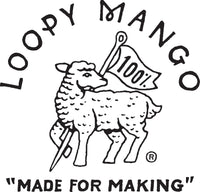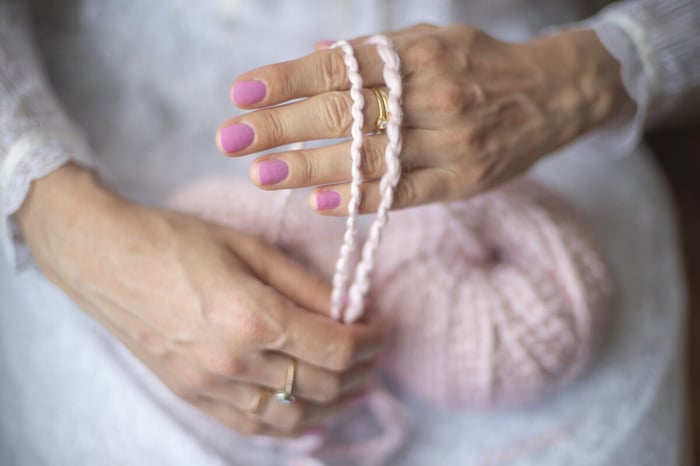Cotton yarn is one of our favorite plant-based options! It's soft, biodegradable, and breathable — making it perfect for fiber projects in all seasons.
Our two cotton yarns — Big Cotton and Summer — are simply irresistible. Watch the video below to introduce yourself, then keep reading for more details on what these yarns are like, what their main differences are, and more!
Key Characteristics
~
Fiber
Both Big Cotton and Summer are made from 100% unmercerized, minimally processed cotton.
Mercerization is a chemical process in which cotton fabric, fiber, or yarn, is treated with sodium hydroxide. This process causes the fibers to swell, which makes them extra shiny, rigid, and more receptive to dyes. We choose to leave our yarn unmercerized so that it maintains more of its natural qualities, such as its softness and elasticity.
Unmercerized cotton has multiple other wonderful qualities. It is:
~
Plant-Based
Cotton is one of the most popular natural fibers available. Like other plant-based fibers, cotton yarn is mainly composed of cellulose. (Wool and other animal-based fibers, meanwhile, are mainly composed of proteins.) The structural and chemical make-up of cellulose makes plant-based fibers better able to stand up to heat and water — in other words, it's easier to wash a garment made from cotton yarn than one made from wool yarn. (Learn more about fiber care.)
The lack of animal fibers in cotton yarn also makes it vegan friendly, and great for those with wool allergies or wool sensitivities.
~
~
Biodegradable
Natural fibers such as cotton have a huge advantage over synthetic fibers: They're biodegradable! Although most fibers will eventually biodegrade, the process is much quicker for natural fibers.
~
Breathable
There's a reason why we reach for cotton garments during warmer months: It absorbs moisture (AKA sweat) and dries quickly, providing a cooling effect even on scorching summer days. In warm climates where it's almost always sunny and hot, cotton knits are essential!
~
Ply
Both of our cotton yarns' properties are most similar to single-ply yarn, in that they're fluffy and lightweight — which make them especially awesome for warmer climates!
What separates our yarn from regular single-ply is a second, thinner cotton strand that's also woven in with the fiber. This strand serves two main purposes:
- 1. Stability: The extra structural support helps ensure that the yarn won't fall apart as you're working with or wearing it
- 2. Texture: The extra strand provides visual and tactical interest without sacrificing any of the benefits of single-ply.
~
Drape
Drape refers to how the fabric of a garment hangs on the wearer's body. As cotton is naturally more dense than fibers like merino wool, it will drape a bit differently. This is best evidenced through images. For example, take a look at the two styles below:

The cardigan on the left is the Boyfriend Cardi in Big Cotton yarn, while the one on the right is Her Cardigan in Merino No. 5, our super-bulky merino wool yarn. Though the patterns themselves are very similar, the way the finished garment hangs is quite different!

The same concept applies to lighter-weight yarn, as well. See a similar comparison above: On the left is the Rhinebeck Cardigan in Summer; on the right is the same design in Dream, our worsted weight merino wool yarn.
Key Differences: Big Cotton vs. Summer

There are a few factors that set these two yarns apart from each other, such as:
~
Weight Category
A yarn's thickness is sometimes referred to as its weight, or weight category. The primary difference between Summer and Big Cotton is their weight category: Essentially, Summer is thinner, and Big Cotton is thicker.
Summer is a bulky yarn, averaging 6-7 wraps per inch, while Big Cotton is a super bulky yarn, averaging 4-5 wraps per inch.
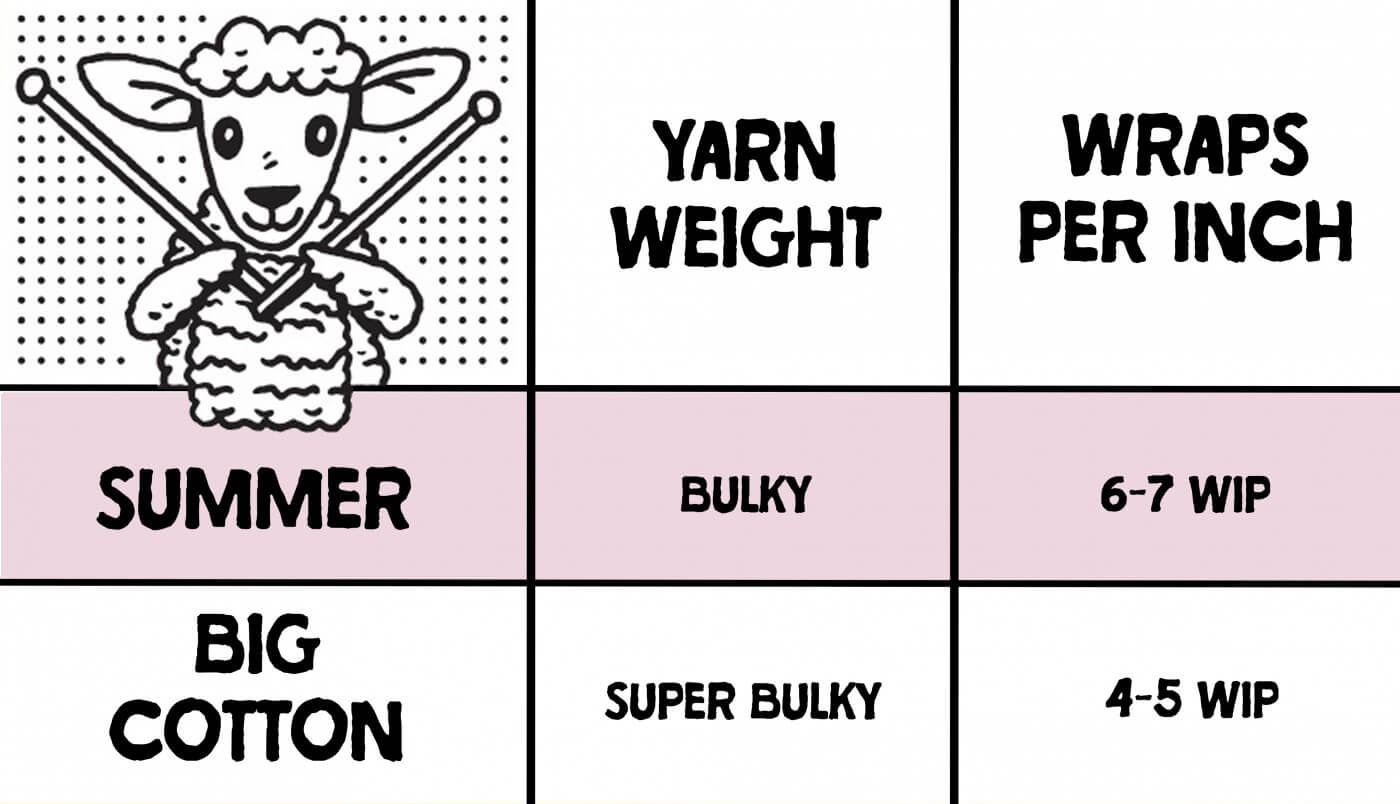
The difference is apparent when looking at strands of each yarn next to each other, like in the video below. (Summer is on the left and Big Cotton is on the right).
These distinctive weight categories are also the cause of other differing properties between the two yarns.
~
Yardage
A ball of Big Cotton and a ball of Summer have the same weight in grams (100g, or 3.5oz). However, a ball of Big Cotton has just 48 yards (43 m), while a ball of Summer has 90 yards (82 m).
The cause of this is simple: weight category! Because Summer is thinner than Big Cotton, more yards of yarn are required to meet the same weight. As a result, balls of Summer have more yards than Big Cotton.
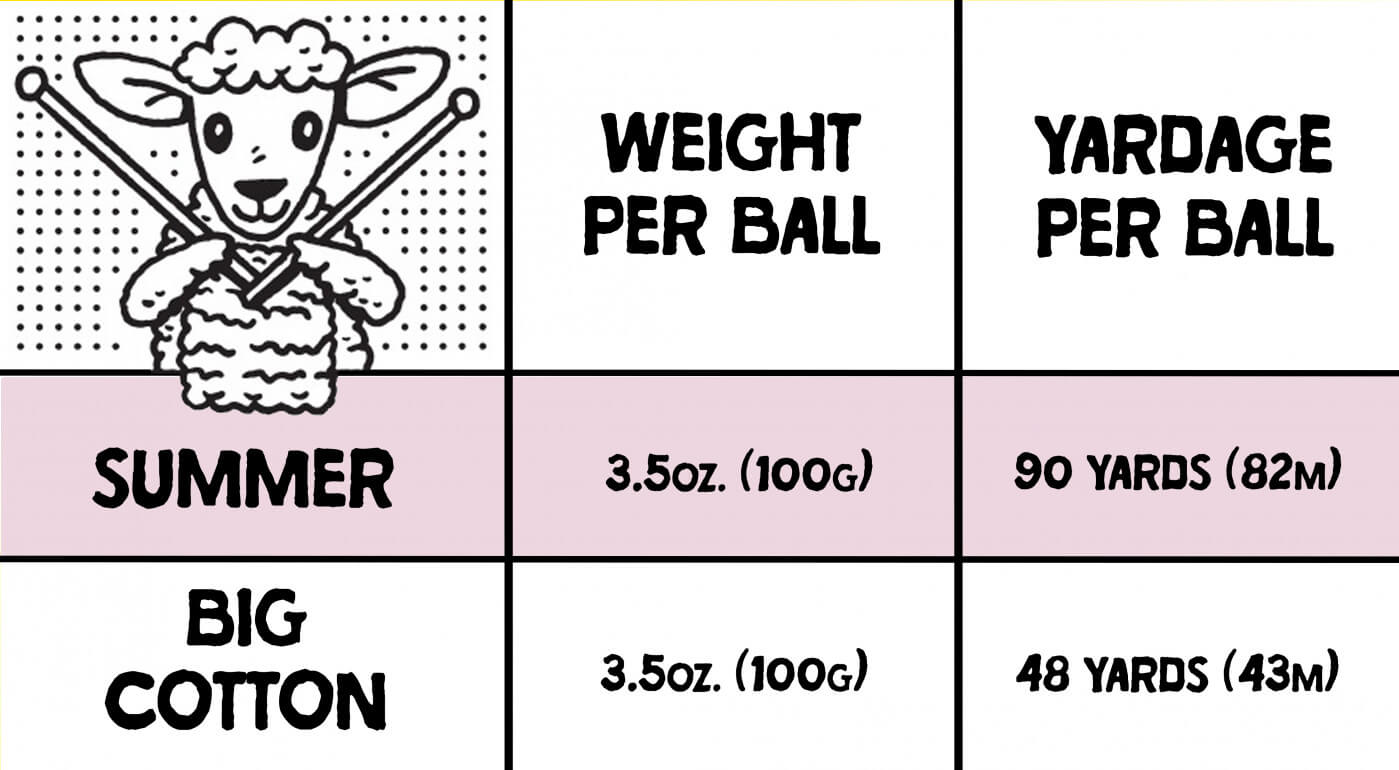
~
Ideal Needle/Hook Size
Whether knitting or crocheting, the size of the tools used will affect the finished fabric. The thought behind this is fairly straightforward: Smaller needles/hooks will result in a tighter stitch, and larger needles/hooks will result in a looser stitch. Due to the differing weight categories between Big Cotton and Summer, they're each better suited for a different size range of tools:
- • Big Cotton works up best with needles/hooks that are between 9mm and 15mm in diameter
(in US knitting conventions, this range is size 13 – size 19)
- • Summer works up best with needles/hooks that are between 6mm and 12mm in diameter
(in US knitting conventions, this range is size 10 – size 17)
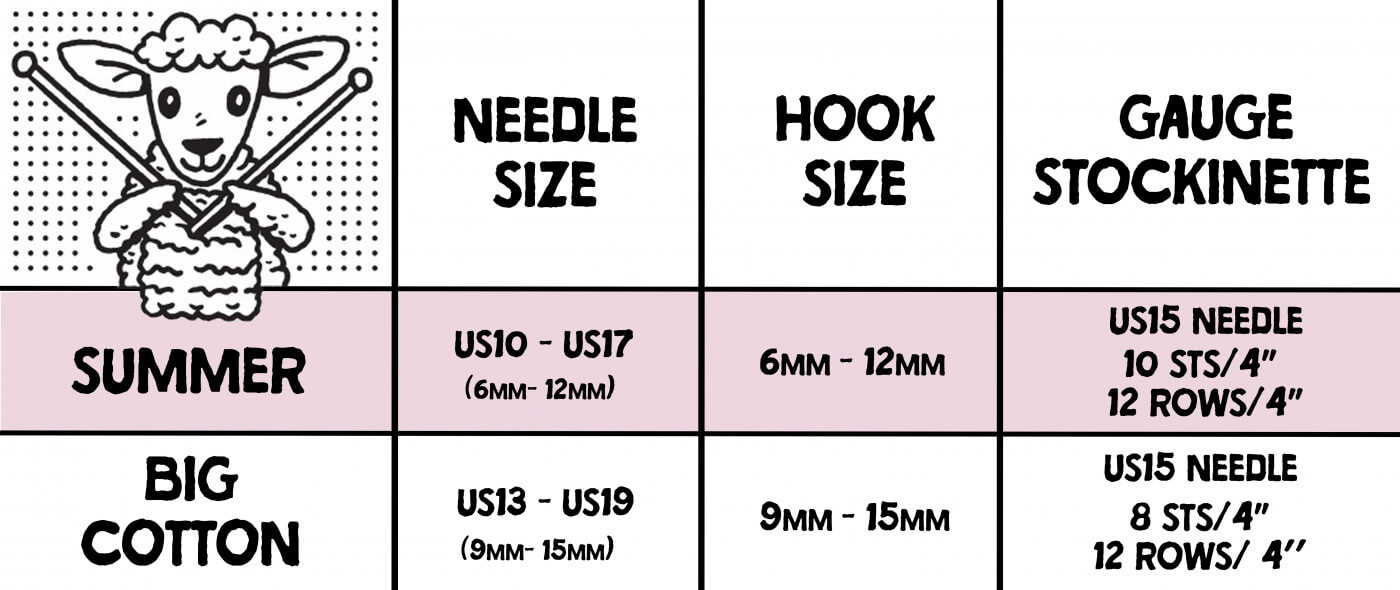
Fiber Care: Unmercerized Cotton
As mentioned, cotton yarn is a bit easier to care for than wool yarn, thanks to its cellulose-based composition. Both Big Cotton and Summer may be hand washed or machine washed cold, and tumbled dry.
We always recommend test-washing a small swatch of yarn to make sure you like the result before washing a finished garment.
The minimal processing our cotton yarns undergo leaves the fibers in a more natural state, meaning they may be prone to shedding. Tumble drying may help reduce shedding, as the agitation will help extract loose fibers.
Find out more in our Fiber Care Guide.

